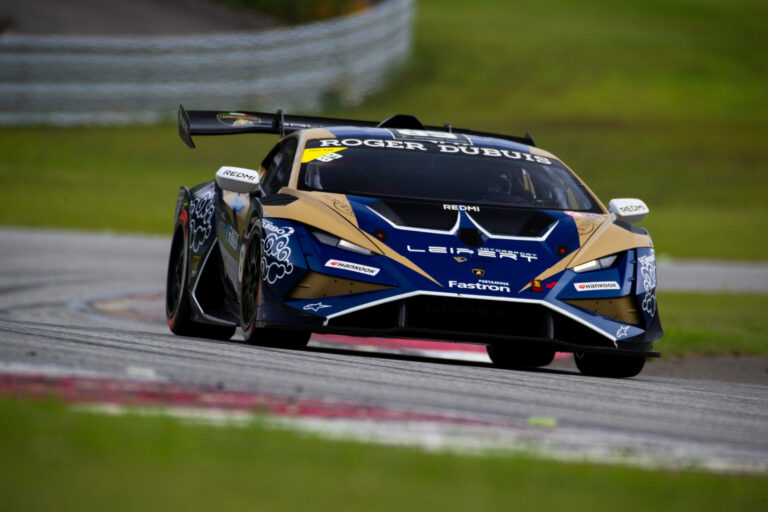The search for an Airstream caravan led Nigel Teape to a trio of American classics which ended up surpassing his Airstream dream
By Ian Parkes
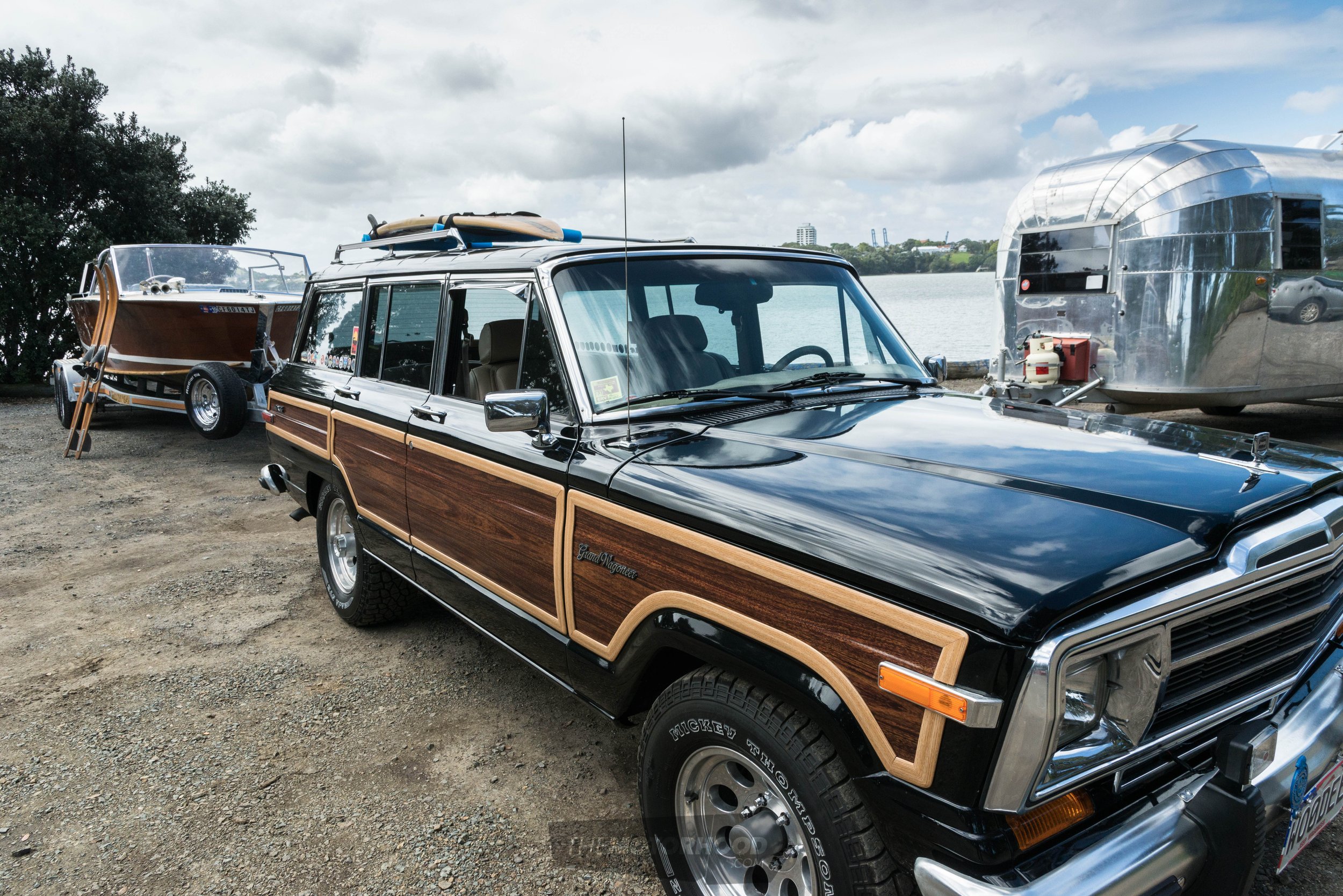
There’s a school of thought in the British dominions that Range Rover invented the luxury SUV. Over in America it’s well known that the honour belongs to Jeep.
Fans of the US car point out that the Johnny-come-lately original Range Rover was not even a luxury vehicle until much later in its life. It had flat vinyl-covered floors designed to be hosed out. The Wagoneer, on the other hand, had a top-of-the-line version loaded with luxury equipment almost from the start.
True, the four-door Jeep Wagoneer, launched in 1962, had also started out as a utility vehicle, sharing the platform with the Gladiator pickup truck. However, its independent front suspension offered car-like handling – although this was deleted on later models – and it came with un-trucklike power steering, automatic transmission, and a factory radio.
The first proper luxury version, the Super Wagoneer, was launched just four years later in 1966. It had plush carpets, leather, cigarette lighters galore, a tilt steering wheel, ceiling courtesy lights, air conditioning, a power tailgate, power brakes, power steering, and of course, wood effect panelling.
As owner Nigel Teape says, “It’s like a Cadillac inside.”
The four-door Land Rover didn’t arrive until 1981, 15 years later. The Jeep went through several revisions and indeed, owners, including AMC and Chrysler which saw a succession of power plants, trim specifications, and naming conventions. The Grand Wagoneer was introduced in 1984 under AMC’s stewardship but it retained the original SJ bodyshell.
Nigel is into his muscle cars and has a 1972 Dodge Challenger with a 440cu-in engine at home so he was tuned into the American version of the SUV. Nigel’s business imports American speed boats so he and his family have had many business and holiday trips to the US, enjoying their great outdoors, as evidenced by the collection of national park and other attraction stickers that line windows of his Jeep and the caravan. He has seen first hand the massive rise in popularity of classic American pickups and classic Jeep SUVs.
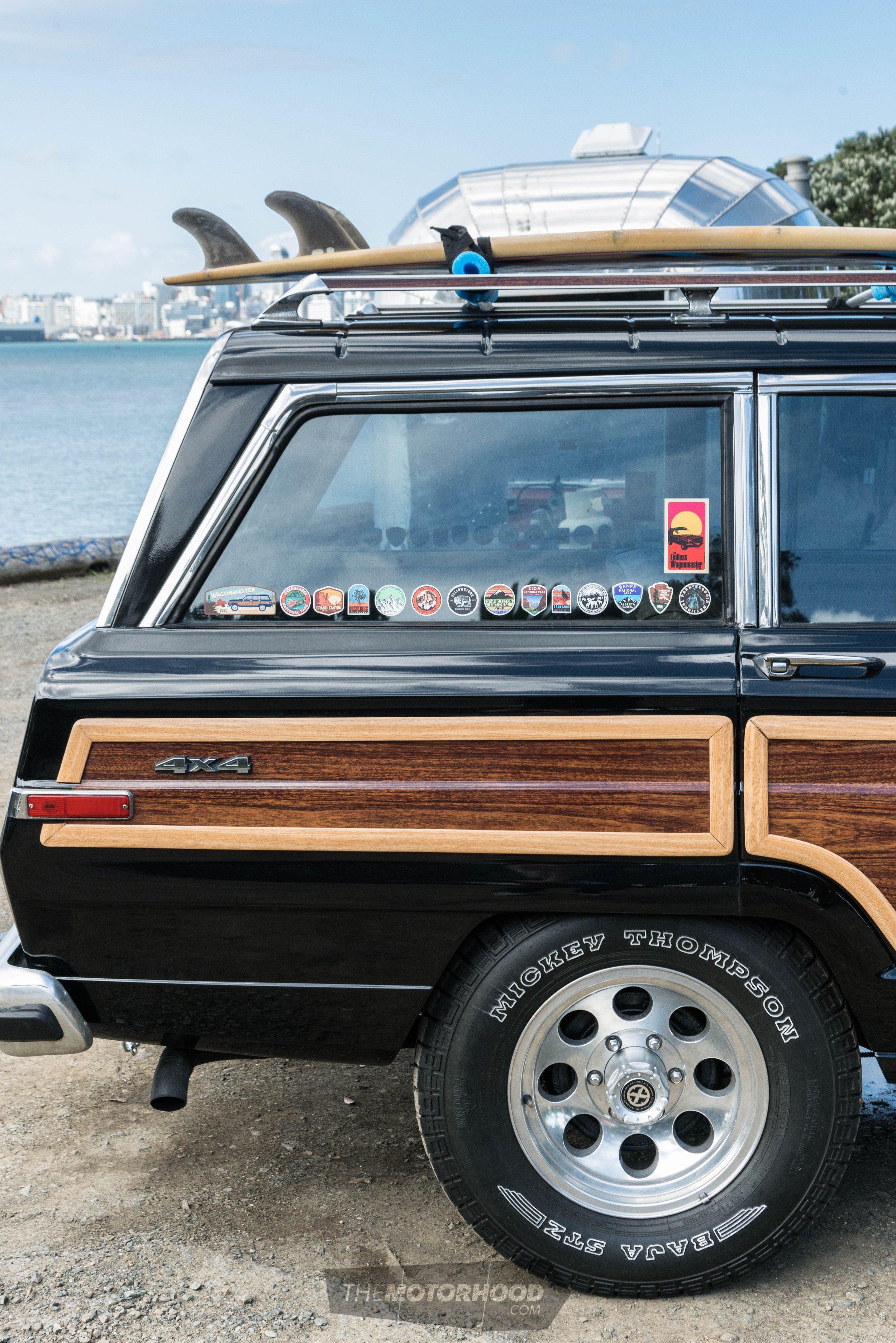
Through the roof
He hankered after one of his own, which would be an ideal tow wagon for his holiday dream machine, the Airstream caravan, but even though Wagoneers remained in production for 29 years, they have simply got harder to find in the US and the price tag steeper.
“The price over there has gone through the roof,” says Nigel. “They want US$50,000 or US$60,000 if you can find one, or US$15,000-$20,000 for a basket case.”
Just as well then he managed to find this one in Tauranga — a 1991 model from the last year of production. It had been imported from Japan. A lot of work had been done on it there and the previous owner had also done more work. There are a couple of trim pieces required to finish off the interior, but so far Nigel has mostly attended to its externals. He fitted Ranco adjustable shocks to help with its towing duties and fitted some American Racing alloy wheels.
“I have the standard wheels at home but this is what a lot of people do in the States and I just wanted more of that wilderness look,” Nigel says. He also shod them with specially imported Mickey Thompson tyres. “I wanted genuine American rubber. I couldn’t have a name like Cheng Shin on those wheels.”
Next on the list is an upgrade to the motor. The original two-barrel carb feeding the 360cu-in AMC engine is apparently thirstier than a later four-barrel carb, so Nigel is planning to fit that and an electronic ignition.
“It will probably have twice the power too.” He has had the car for 18 months, but his long-held ambition to acquire one of the classic polished alloy, round-shouldered Airstream caravans to go with it remained unfulfilled. His business meant either he or a colleague were frequently in the US of A attending auctions, often at likely resort locations, but the years continued to pass Airstreamless. Those they did find were too far gone or too expensive.

Boater late than never
That’s how the boat came along. It was something of a consolation prize. Nigel’s colleague phoned him and said he had found something he was sure Nigel would like. It wasn’t an Airstream but it had an equally classic appeal — a Century Resorter, a 1960s mahogany lake ski boat.
It sure fits the bill when it comes to evoking American summer holidays. Nigel’s business means he is not short of options when it comes to watercraft, but they are all fibreglass. The crisp lines and warm wood of this classic mahogany lake boat has an altogether different appeal — one he couldn’t resist.
The boat arrived in April 2020. Nigel has given it a superficial tidy up and he filled in some of the lockdown flat spot checking out the engine. He changed all the fluids and filters and ran it up at work, under the watchful eyes of his expert team.
He says the boat was built in 1964 but it was re-engined in 1973, when a big block 440cu-in Chrysler was fitted. When we were finally able to meet Nigel and his son Max the spring weather was just warming up. Nigel used to do a bit of water skiing in his youth and while he had a ski along for the shoot, he’s yet to test it out behind this boat. In fact, the boat had yet to go in the water.
Wandering around the boat, it looked like it had been treated to Coppercoat Antifoul, a premium protective treatment befitting the boat’s quality. It is a proprietary mix of copper powder in liquid epoxy which is painted on to provide long lasting and more environmentally friendly protection than anti-fouling paint. While much more expensive, it was designed to last a decade or more — and perhaps it did. However, it was now beginning to flake away in a couple of places.
“It looks like it was painted over a rubber underlay but that wasn’t too successful. It’s peeling away,” says Nigel. It will all need to come off.
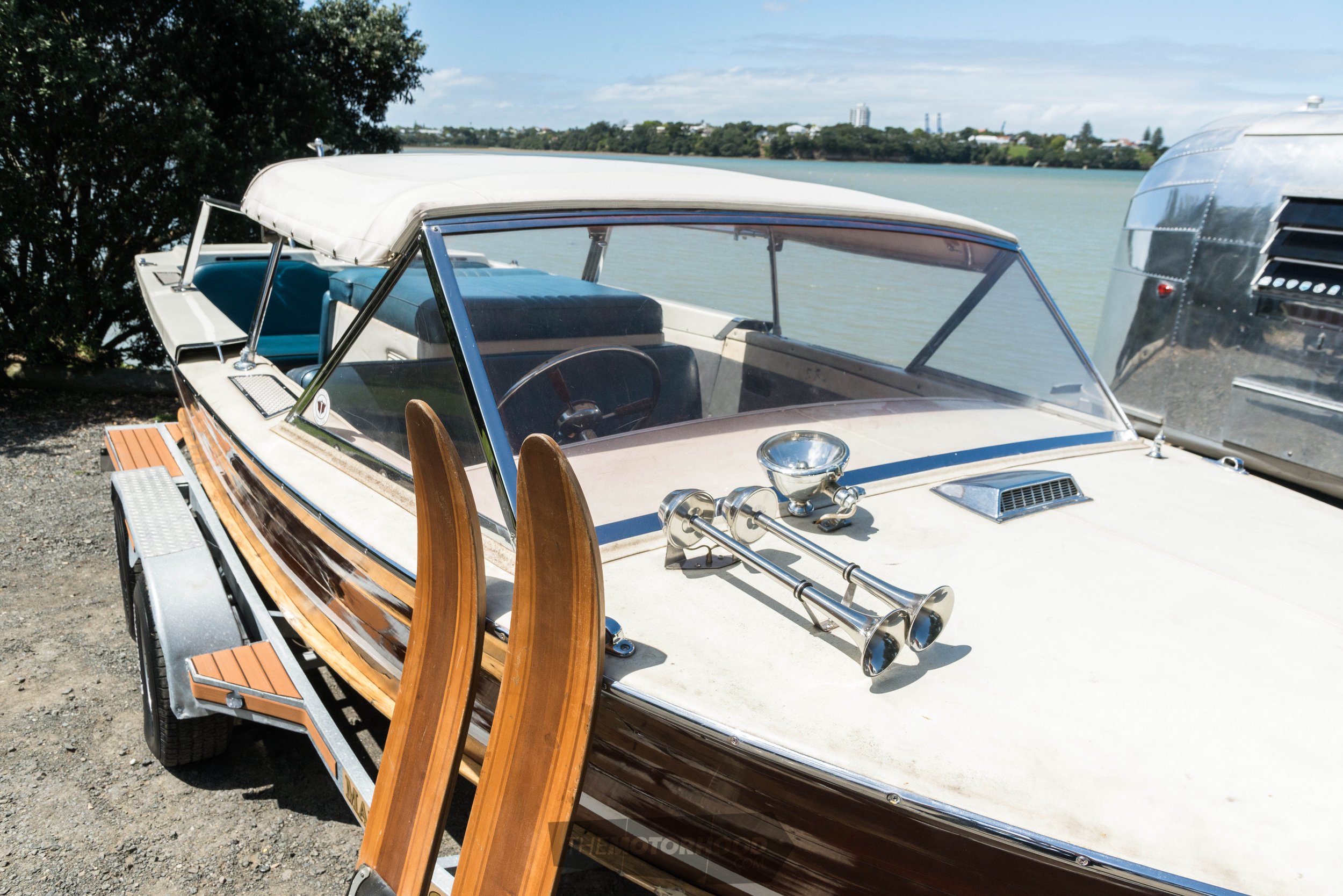
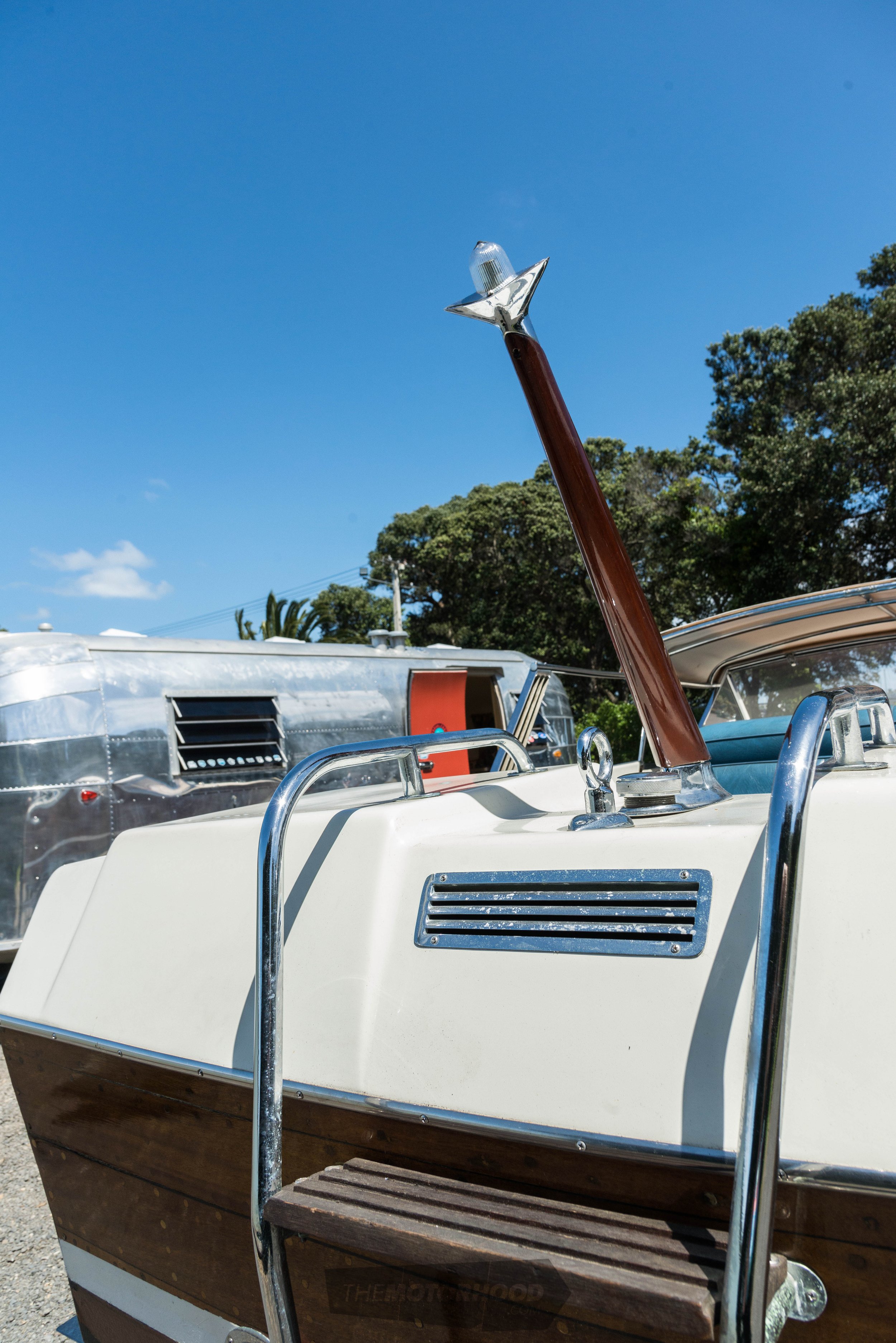
Thoroughbred
Up close, some of the chrome fittings were also a little tarnished but it would not take much to bring them back. Having personal experience with rechroming that did not last more than two years I can appreciate that when these pieces were made they had gone through a top-quality process on well-made hardware.
It was quite apparent that, like the caravan, this boat was a thoroughbred of its kind. Nigel tells us the Century Boat Company was indeed a respected builder of American racing boats.
The company was founded in 1926 in Milwaukee by boat building brothers James and William Welch. Two years later the company was moved to Manistee, Michigan, which would be its home for the next 60 years. In 1930 its Century Hurricane claimed the world speedboat record of 50.93 miles per hour. That no doubt boosted sales and by 1937 the company was offering a range of 28 models. In the 1940s the firm turned to war work. It delivered an impressive 3600 vessels and garnered an Army-Navy E Award for excellence in production. By 1950, the company had 343 dealers and used the slogan ‘The Thoroughbred of Boats’.
Its post-war models took advantage of the rapidly rising power output in modern engines and its designs became wider, lower, and sleeker.
The emergence of water skiing fell into Century’s lap and the Resorter gained recognition as an ideal ski boat. It was chosen as the official boat for national and international competitions through the latter half of the ’50s.
Apparently they incorporated “the stunning design trends of the automobile industry from that time”.
Ah yes. That explains the chrome-lipped air scoops atop the gunwhales. It also introduced painted design schemes, classy hardtops, and fibreglass panels in the structure of the mahogany boat.
The company continued producing wooden boats throughout the sixties but in 1969 Century became a fibreglass-only boatbuilder.
Having moved to Florida, Century continues to this day, making mostly centre-console boats from 22-32ft in length, including one called a Resorter. The brand’s catchphrase has changed to “Fishability, luxury and reliability”.
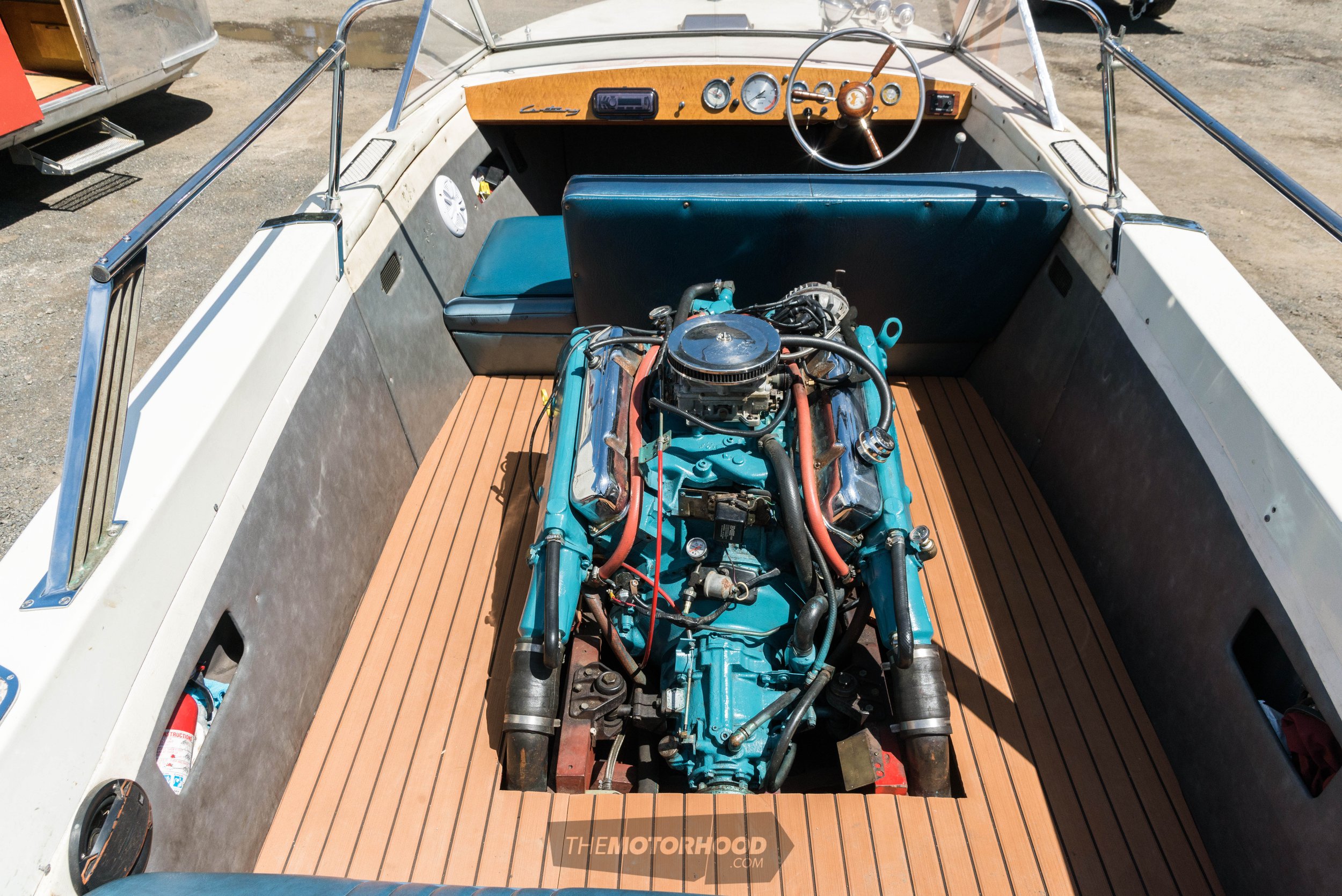
Airstream vs Avion
As luck would have it, not long after Nigel had decided he might have to settle for the boat, his colleague called to say he had found an Avion caravan in Scottsdale, Arizona, that could be just the ticket. In fact, he said, if Nigel didn’t buy it, he would.
“As soon as I saw it I knew that was the one,” said Nigel.
Hankering after an Airstream for a long time meant Nigel knew enough about the Avion to realise it was more than a good substitute. After a fruitless seven-year search, this was a chance he couldn’t afford to miss. In the metal, the 1959 Avion Holiday 24 is every bit as delightful as its classic lines suggest. Its condition is not showroom perfect but to a real classic enthusiast, it is even better than that — it is almost completely original.
The gloriously patterned and really rather ritzy lino tile floor is worn but is all the more charming for that.
To replace it, even if that was possible, would be to ruin it. The wooden cabinetry might be a little dry in places and that’s fixable, but it would be a shame to lose the sun fading that evokes so many summers.
Nigel loves the 13-panel riveted corners from this early model. The panel count was drastically reduced in later models and eventually replaced with a single formed piece. To match, it also has louvre windows, which were also dropped soon after.
“They rattle and you can’t insulate them. They are not ideal but they are just such a cool look,” says Nigel.
Information on this early model is scarce but Nigel believes it used to have a bathroom where the double bed is now, so Nigel reckons it is actually about 80 percent original. But the layout suits the Teape family and Nigel just plans to tidy up some of the more amateur handiwork in the conversion.
He doesn’t plan to fix the few slight dings in the van’s exterior, which he considers badges of honour, but he has thought about polishing the exterior. “It would polish up like a mirror,” he says, but a high shine runs the classic risk of creating a contrast with the comfortable wear and tear evident throughout the rest of the caravan.
Every feature is a delight to the eye, and while Nigel has replaced a rooftop vent with a more modern and weatherproof item, changing almost anything else would surely diminish its original appeal. The soft curves of the stove, the extractor fan shroud, and the old Frigidaire fridge are a perfect counterpoint to the caravan’s lines and Nigel expects they will remain, even if they are just used as storage for towels. The wall-mounted can opener is another gadget that even if it no longer worked it would be a crime to remove. The light fittings are a delight, as is the Jetsons-style soft furnishings. The plastic mail holder on the wall is another great period piece. The caravan still has the original gas heater but Nigel doesn’t plan to use that or the stove.
“Cooking meat or fish inside would just get everywhere. Better just to do it outside, and it’s more social.”

Bettering the best
Nigel fitted new wider wheels to match those on the Jeep and got a warrant for it just the day before towing it down to last year’s Beach Hop where the combo proved an instant hit with an appreciative crowd.
It is no surprise that to many this represents the high point of caravan culture, and it came about because another pair of brothers decided that an Airstream was not quite good enough.
In the early 1950s, Loren Cayo and his family hooked up their Airstream caravan and set out to meet up with younger brother Robert and his family with their Little Gem caravan in Yellowstone National Park. The two brothers naturally talked about the features of their different caravans. They both liked the aircraft-style riveted aluminium construction of the Airstream but they decided on a few points they could do better.
The most significant is that the chassis is much stronger than the light construction favoured by Airstream, which caused the bodies to flex.
Both brothers had experience in metal fabrication, product design, and manufacturing so, after bringing in two other partners, they founded Romany Coach, Inc. in 1955.
They chose the name ‘Romany’ specifically for its gypsy connotations as explained in their brochure: “It is from this, the earliest of mobile homes, that we have taken the name of our modern travel trailer. We feel that there is a little of the Romany in all of us and we have an inherent desire to be ‘free as the birds’. To travel and relax, to laugh and sing, to hunt and fish, to travel to new and far off places, to see what is over the next hill.”
Unfortunately, the Romany gypsies in the Michigan area protested about the use of their name. The new company decided to lean more on the aircraft association instead and changed the name to Avion. They recalled the caravans that had already gone out under the Romany brand to change their nameplates to Avion. Apparently it was rumoured Airstream threatened a lawsuit because it had a model called the Romany, but Robert’s son Bill said in an interview later that Airstream did bring lawsuits against Avion, but not over the Romany name. It claimed Avion had copied the Airstream, but there were significant differences between the designs and, besides, a number of other caravans also used riveted construction so the suits were dismissed.
And so the spirit of free enterprise triumphed and, thanks to Nigel, we get to see some of its greatest expressions in wood and metal. All three are vehicles that symbolise freedom, and the right to roam. That’s something that we appreciate ever more keenly in these Covid constrained times.
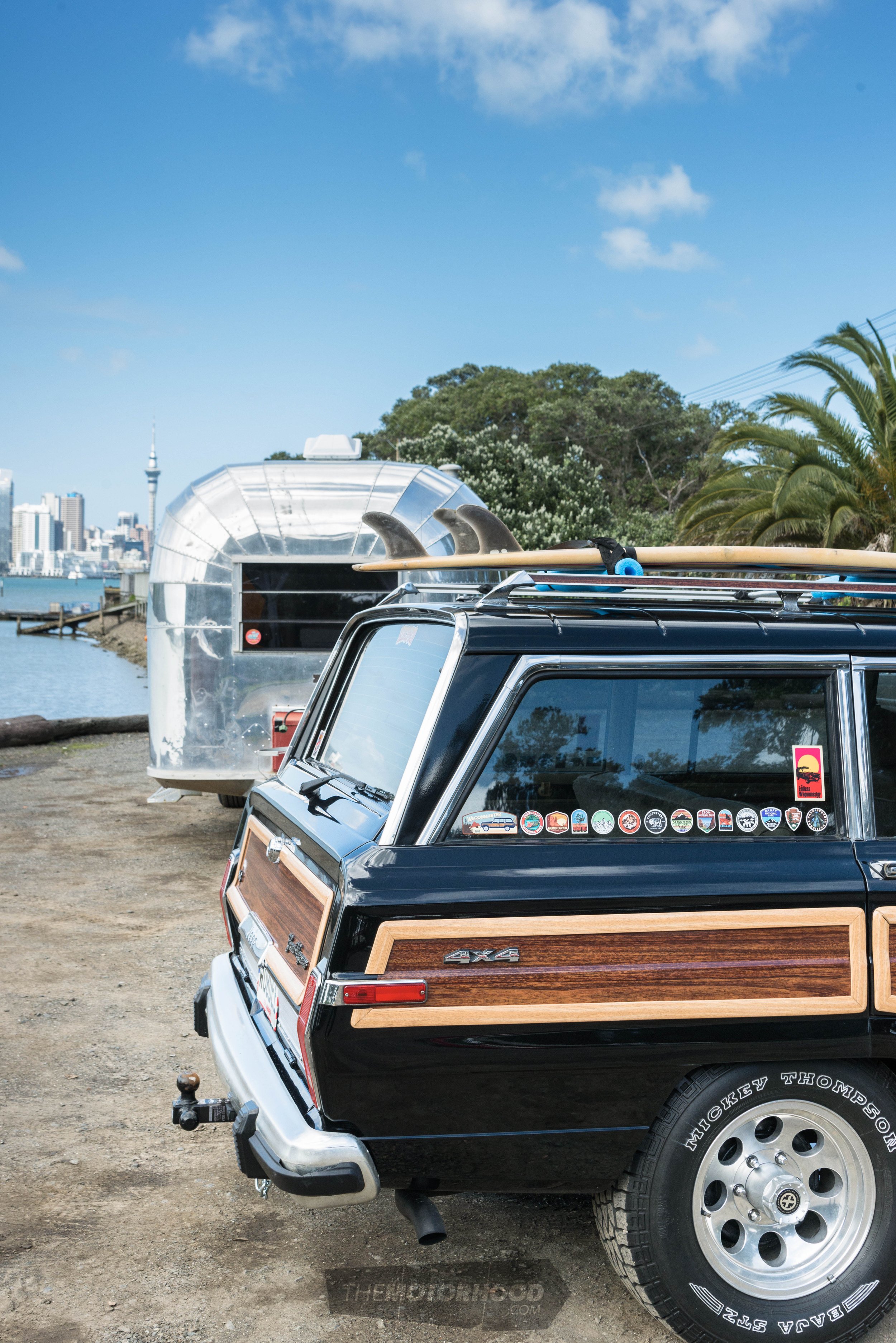

This article originally appeared in New Zealand Classic Car issue No. 374


